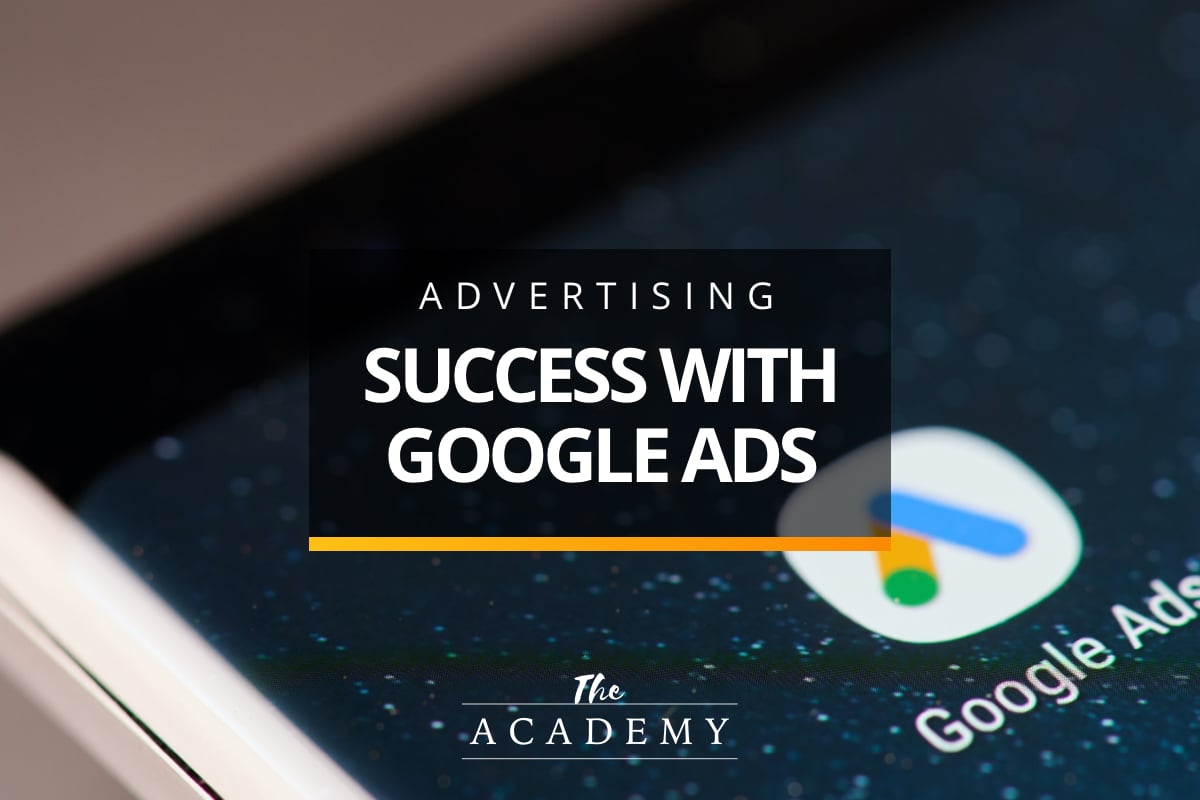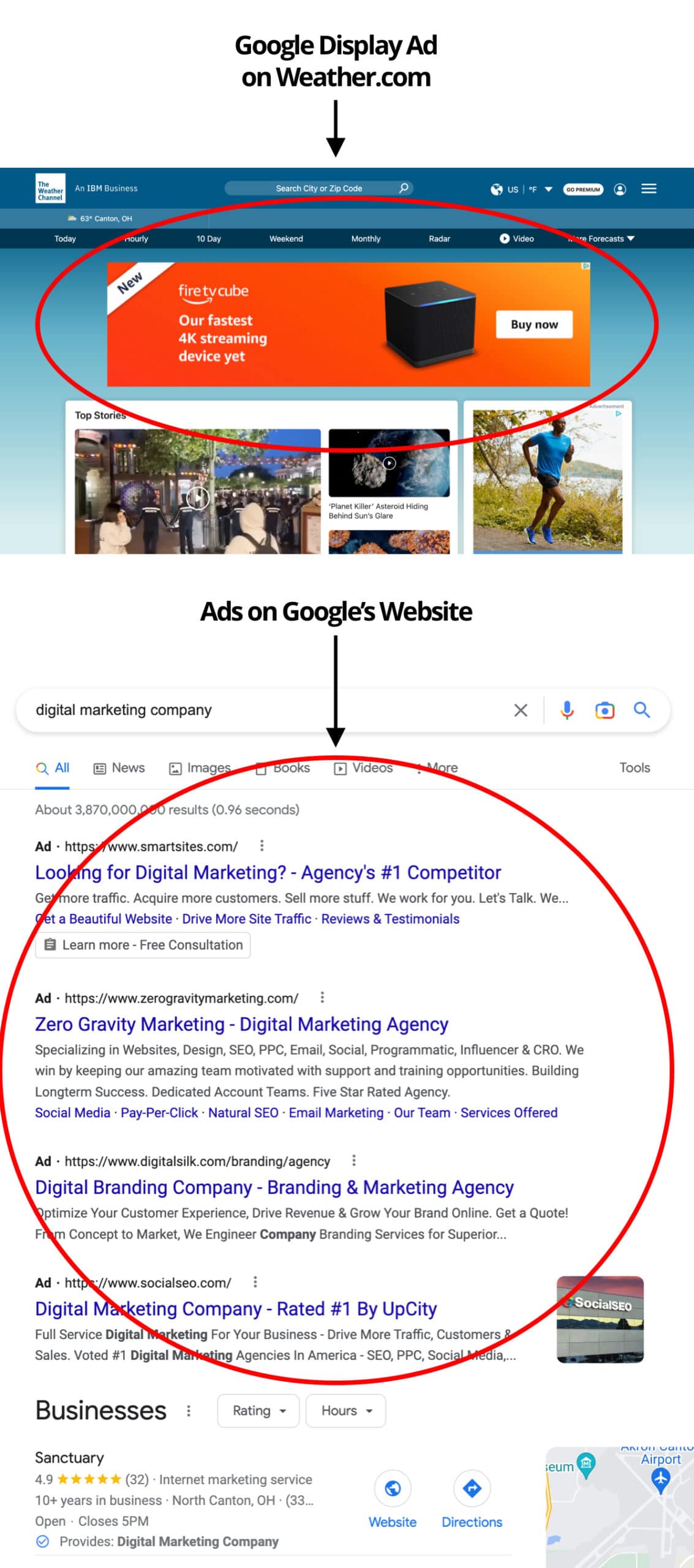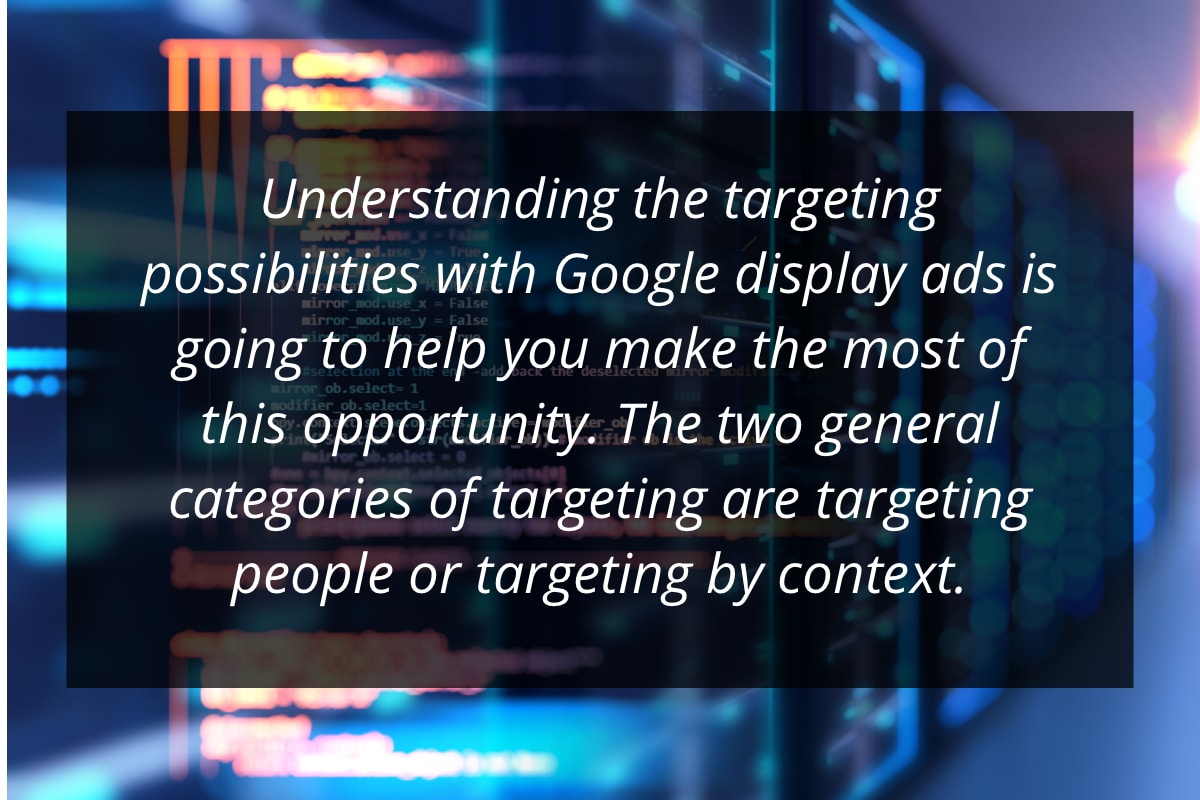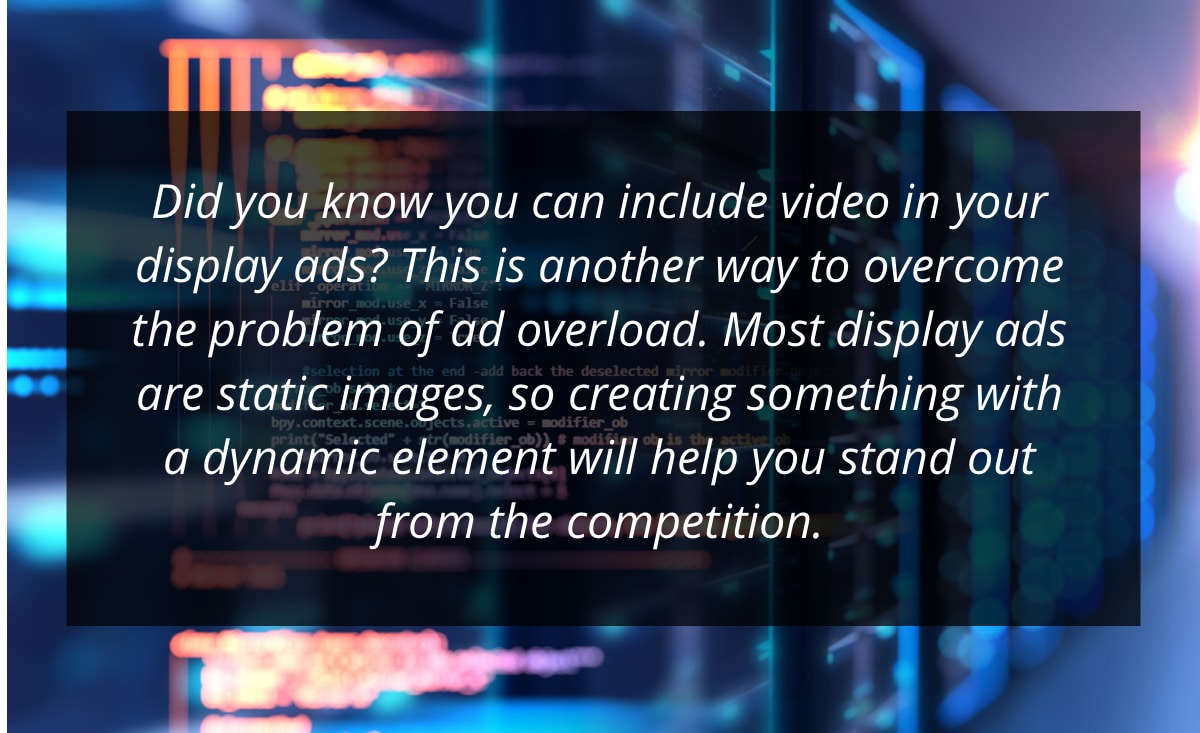
Google display ads represent one of the biggest opportunities on the web to put your products and services in front of a massive audience. With incredible reach and amazing targeting capabilities, a well-organized Google display ads campaign can be a profitable endeavor.
But your success on the platform is far from guaranteed. There is a ton of competition on this, and if you aren’t careful, you’ll find yourself spending more than you planned and only getting mediocre results to show for it. With this article, we’d like to introduce some basics of Google display ads to help you hit the ground running with this exciting opportunity.
Understanding Google Display Ads
First, let’s make sure we are on the same page when talking about Google display ads, as compared to other forms of advertising. When you first think about Google ads, you probably think about the versions that are displayed along with the organic search results when you use the Google search engine. And that’s certainly a popular option, but it’s not what we are talking about here.
Instead, Google display ads are shown on the Google Display Network, which is a massive network of sites across virtually every different niche on the web. In other words, to see your Google display ads, users don’t actually need to be on Google; They can be on countless different sites and still encounter your advertisements. This makes the reach of this platform even greater than what you would get with search ads alone.

We’ve already mentioned the big reach of display ads on Google as one of the primary benefits of using this platform, but what else is there to like? The list below touches on some other attractive features that are worthy of your attention.
- Find your audience. Sure, countless people use Google search regularly to find what they are looking for, but in some markets, it might be hard to locate your target audience using only search ads. With the Display Network, you will have a much easier time picking out exactly where you want to find people. This will lead to great exposure in many cases, and it can serve as a nice compliment to a search ad campaign. For instance, if you already know some websites where your audience is likely to hang out, leverage the Display Network to put your brand on those sites and get in front of the right people.
- Bring costs down. Generally speaking, clicks that you acquire through Google display ads are going to cost significantly less than the clicks you attract on search ads. This will vary by niche, of course, but you might find that display ad clicks in your niche cost just 25% of what they would cost if you got those clicks via search. It should be noted that the conversion rate does tend to be lower when getting clicks on display ads, which is why the cost comes down. But this is still a nice option for a business that wants to promote while on a tight budget.
- Sell more products or services. This is what it is all about at the end of the day, right? With so many people to reach, it’s likely only a matter of time and experimentation before you zero in on the right audience within the Display Network and start to close additional deals. Any business that doesn’t at least experiment with Google display ads is simply skipping over an opportunity to tap into a potentially valuable platform.
Setting Up Your Google Ads Campaign
A big part of having success with your display ads simply comes down to not making any mistakes on fundamental elements of the campaign. If you get tripped up on the basics, you’ll always be falling short of your potential with these ads. There is nothing particularly complicated or tricky about getting the fundamentals right, but you do need to take your time and pay attention to detail along the way.

Here are the foundational components that make up a healthy, sustainable Google display ads campaign:
- Setting a clear budget. It’s critical that you have a clearly defined budget for your Google ads campaign. This is true of pretty much every kind of ad campaign, of course, but it’s particularly important here because how much you are willing and able to spend will dictate some of the decisions you make. For instance, if you want to start out with a very modest budget, you’ll need to zero in on the parts of the Display Network that are most closely aligned with your target market. In other words, you won’t be able to afford to cast a wider net, as your daily spend will get used up quickly and it will be harder to figure out what is working and what isn’t. With a small budget, start with a tightly focused campaign and only gradually expand your reach as you get a handle on how your ads are performing.
- Targeting the right people. Understanding the targeting possibilities with Google display ads is going to help you make the most of this opportunity. The two general categories of targeting are targeting people or targeting by context. First, let’s talk about the option of targeting people, which really refers to groups of people rather than individuals (although that is possible with retargeting, but that’s a topic for another article). You might choose to target groups of people by demographic information, such as gender or age. Alternatively, you could target based on characteristics like what interests they have. You may want to blend your targeting with those two approaches to wind up with something that finds your ideal audience with impressive accuracy. Instead of targeting groups of people, you could opt for contextual targeting, which makes it possible to use keywords, topic categories, or even specific websites to find the right market. It’s not a case of one type of targeting being better than the other, but rather, it’s about experimenting with the options and determining what works for your needs.
- Picking the right type of ads. Since display ads require visual assets to be displayed to your audience, you’ll need to have a plan for how those ads are going to be created. This is a little more complicated than with text ads, where you just write the copy and get on with it. You can choose to create finished ads with the appropriate dimensions for Google’s specs, or you can utilize their responsive ads technology to have the ads created automatically using some of your media and copy. If you are trying to keep things simple and limit the time needed to create your display ad campaign, responsive ads are a great option. With that said, if you have a very specific vision of how you want your finished ads to look, you can do the designing and dial in everything perfectly. There are five ad sizes available for mobile and nine sizes offered for ads that will be served on desktop screens.
Consider These Valuable Tips
Once you have your fundamentals in a good place, you’ll already be well on your way to finding some success on this platform. But the job is never done. There will always be improvements to make within your campaigns.

As you get up and running, keep the following tips top of mind. In the end, it’s likely to be your ongoing optimization efforts that determine if the campaign you invest in is profitable or not.
- Use existing information. If your site has been up and running for some time, you probably have access to plenty of data that you can use to make your display ad campaign as successful as possible. For example, use your Analytics account to see where your traffic is coming from, and then consider running ads on those sites (the ones that are within the Display Network) so you can get even more traffic from those sources. People are already coming to your pages from these other sites, so why not run some ads and drive even more traffic from a proven source that you know has visitors who are interested in what you offer.
- Make a notable offer. Ads are everywhere on the web. Since there are so many ads up and down just about every website, it’s natural for web users to tune them out to some degree. How do you grab attention when so many ads are shown at all times? Make an offer that is going to demand the attention of your target audience. You’ll need to figure out what that offer is, of course, but it should be something worthwhile enough to draw some clicks. It’s important to remember that you don’t want to make empty promises in your ads. Meaning if you offer something in the ad copy, you better deliver when the visitor gets to your landing page.
- Employ video. Did you know you can include video in your display ads? This is another way to overcome the problem of ad overload that we talked about above. Most display ads are static images, so creating something with a dynamic element will help you stand out from the competition. This is going to take more work to create but going above and beyond might be just what it takes to find success with your campaign.
- Extend other campaigns. If you are already running other types of ads and finding some success with the targeting of specific keywords, try those same keywords out in your display efforts. While the results you get in one area might not perfectly replicate themselves in another, it’s likely that a winning keyword is going to continue to win for you when put to work in this setting.
Whether you are just getting started with your first display ad campaign, or you have done some work in this space previously and want to get more out of your efforts moving forward, we hope this article has been helpful. Remember, there is no such thing as the perfect ad campaign, so commit yourself to consistently testing performance and improving your results.
Most Popular Articles

Seeing Favicons in Your Google Search Results? Here’s Why…
Have you noticed anything different in your Google Search results lately? Google added tiny favicon icons to its organic search results in January. It was…

Business Growth and Digital Marketing News & Tips 11-17-24
Are you encouraging and rewarding innovation? Lee Cockerell is the former Executive Vice President of Operations at Walt Disney World. A lover of traditional red…

Business Growth and Digital Marketing News & Tips 11-27-24
A culture of gratitude "Feeling gratitude and not expressing it is like wrapping a present and not giving it." – William Arthur Ward Beyond being…








